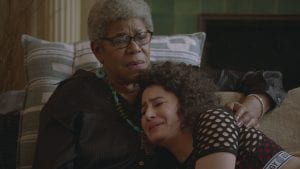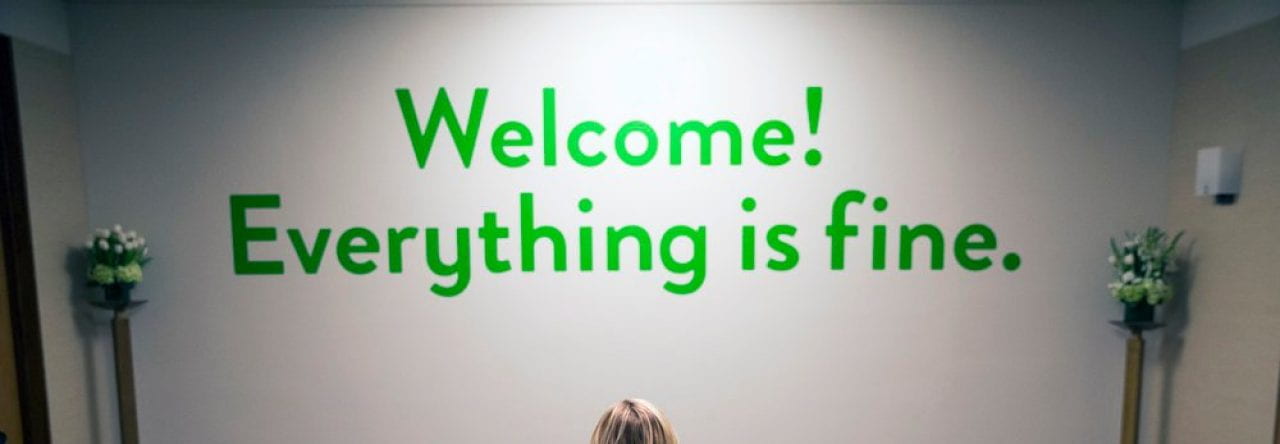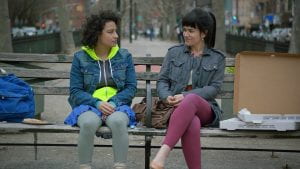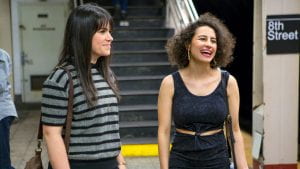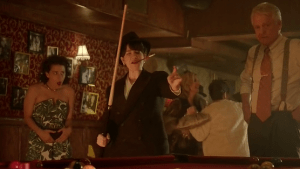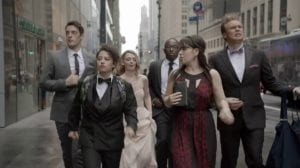Bickford, T. (2015). Tween intimacy and the problem of public life in children’s media: “having it all” on the disney channel’s hannah montana. Women’s Studies Quarterly, 43(1), 66-82. Retrieved from http://prx.library.gatech.edu/login?url=https://search.proquest.com/docview/1665109811?accountid=11107 *
This peer-reviewed source explores the concept of the “tween,” the age cohort between childhood and the teenage years. The source delves into the discussion about how tweens in the United States have a misrepresented image in children’s television. Bickford examines how gender stereotypes affect the image of the tween in America, and it is presumed that tweens are girls who regularly consume children’s media. Bickford utilizes Hannah Montana to argue that even the protagonist, a tween pop star living a double life, is having trouble “having it all” in her public and private life. This source relates how the hyper-feminized view of tweens is negatively affected by the notion of “having it all,” where women are expected to have control over both their public persona as well as their private image. The source argues that adult women in the media are treated as social minors, whereas tweens in the media are eroticized for their childhood innocence. This peer-reviewed source is relevant because it reinforces how female gender roles in children’s television mirror the unequal representation of a woman’s life in the general media.
Breed, Lisa, et al. “Variations in the Gender‐Stereotyped Content of Children’s Television Cartoons Across Genres.” The Canadian Journal of Chemical Engineering, Wiley-Blackwell, 31 July 2006. Retrieved from onlinelibrary.wiley.com/doi/abs/10.1111/j.1559-1816.2002.tb02767.x. **
This study examined how gender role stereotypes are projected across four different genres of cartoons, such as traditional adventure, nontraditional adventure, educational, and comedy. While certain behaviors of aggression were not as present in educational cartoons than in the other genres, the study deduced that male characters were still at the forefront of the storylines across all types of cartoons. The study found that male characters were more represented and had more leverage in the plot of the cartoons than the female characters, and the stereotypical male behavior of aggression was emphasized in the adventure cartoons. The study also supported the notion that female characters were mainly employed as the love interest or supporting character, rather than significant, plot-progressing characters. While this source tends to be redundant with its findings on male representation over female in children’s cartoons, the source does add a specific criteria of cartoons to highlight the differences of representation across the genre. Despite the specificity, the source continues to bolster the fact that female characters are misrepresented in children’s media, which can perpetuate into future generations.
Browne, B. A. (1998). Gender stereotypes in advertising on children’s television in the 1990s: A cross-national analysis. Journal of Advertising, 27(1), 83-96. Retrieved from http://prx.library.gatech.edu/login?url=https://search.proquest.com/docview/236627552?accountid=11107 *
This peer-reviewed source is a study on how gender stereotypes are perpetuated through advertising on children’s television. In the analysis, gender stereotypes were observed in advertisements that aired on children’s television in the United States and Australia. The goal of the study was to examine how often gender stereotypes are projected through these commercials, and if there was any difference between the children audience in the United States and Australia. The study found that there was relatively little difference in the projection of gender stereotypes in these advertisements between the two countries. The source argues that on a consistent basis, boys were viewed as more knowledgeable and dominant than girls were viewed, regardless of the country. Therefore, this source contains relevant information because it supports the notion that children’s programming inherently perpetuates gender stereotypes that diminish girls’ value. The source is valuable because it has concrete evidence in the misrepresentation of girls in children’s media. This peer-reviewed source supports the idea that this gender bias affects the fabric of the general media in that women are continually portrayed as less than men.
Chandler, E. (2016). “I never wanted to be an ashley!” androcentrism and gender entitlement in disney’s recess. Gender Issues, 33(2), 148-162. Retrieved from doi:http://dx.doi.org/10.1007/s12147-016-9154-9 *
This peer-reviewed source tackles the idea of androcentrism in the range of normal childhood femininity. Chandler utilizes Recess, a popular Disney cartoon, as the prime example of how androcentric characters do more to harm the image of femininity in childhood than help it. The source describes how in one episode, Ashley Spinelli, a “tomboy,” does not like her name because it is associated with the girly-girl Ashleys of the school. Spinelli’s inhibition to accept her name relates to the source’s argument that androcentrism is an alternative way to downplay femininity as cruel and vile. The source acknowledges how perceived masculinity in girls is a better life than embracing their femininity, which is relevant to the gender stereotypes in children’s television as it is. This peer-reviewed source adds a crucial point in the representation of gender in children’s television because it tackles how masculinity is always perceived as better than femininity. This source proves that rather than embrace themselves for who they are, children view masculinity as the best way to live their lives.
Morgan, M. (1982). Television and adolescents’ sex role stereotypes: A longitudinal study. Journal of Personality and Social Psychology, 43(5), 947-955. Retrieved from http://dx.doi.org/10.1037/0022-3514.43.5.947 **
This study analyzed the relationship between sex-role stereotypes and television viewing in a sample of 349 middle-school aged children over two years. The study was conducted to determine if television viewing did impact the children’s sex-role attitudes as well as the difference in attitudes between boys and girls. The study concluded that television viewing greatly affected the sex-role attitudes of the girls, whereas the boys were seemingly unaffected by television viewing in their attitudes towards gender norms. However, this source does add a unique perspective to gender representation in children’s television because the study includes the socio-economic background of these boys and girls. Lower-class girls were found to have consistently similar views to the boys while the more affluent girls reacted much more strongly to the television viewing. The study adds a significant point that those who are least likely to have traditional sex roles, such as upper class girls, were impacted much more by the television viewing than everyone else. This source reinforces that girls are much more influenced on their sex-role attitudes by television, but it also adds how socio-economic status can differ the attitudes within girls themselves.
Thompson, T.L. & Zerbinos, E. Sex Roles (1995) 32: 651. Retrieved from https://doi.org/10.1007/BF01544217 **
This source describes a study that sought to examine the evolution of gender roles in animated cartoons within a twenty year span, from the 1970s to the 1990s. The study observed the behaviors, communication, and overall significance of male and female characters in these selected cartoons. The study found that male characters were still a dominating force in the story and significance of the cartoon, and they wielded much more of the total speaking lines and screen time than the female characters. The source describes how within the twenty year span, there was little change in how male characters are portrayed in cartoons as compared to the female characters. However, the source also acknowledges that the roles of female characters in these selected cartoons has grown in significance from the 1970s to the 1990s, even though the evolution was miniscule. This source provides a unique representation of gender roles because it examines the stereotypes within cartoons, which are ultimately made by men and women. The projection of the real world societal stereotypes in children’s cartoons supports the inherent disparity of gender representation in children’s television.
*=peer-reviewed
**=not peer-reviewed


